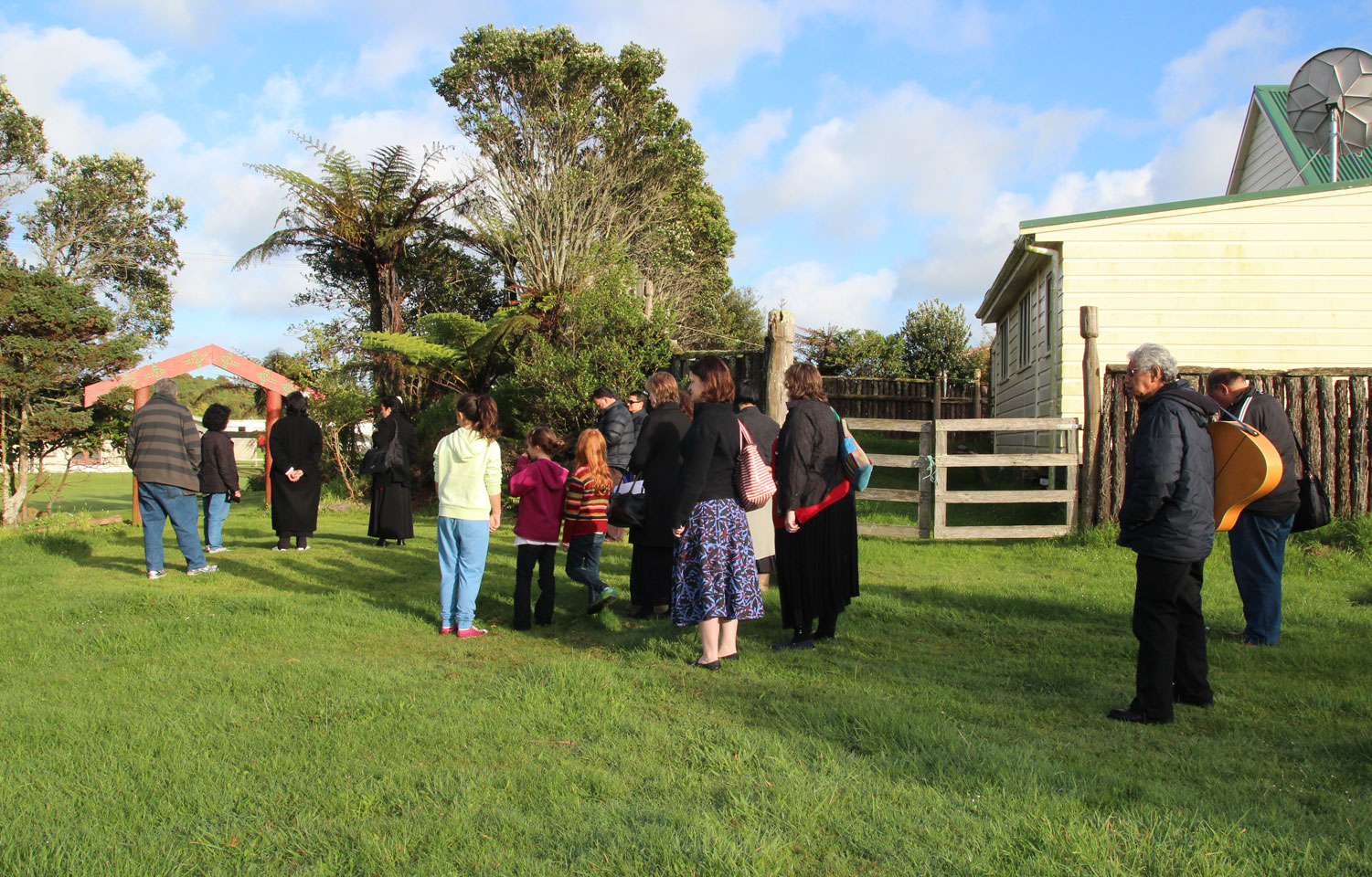 Archdiocesan News
Archdiocesan News
November 2013
Emily Benefield, Caritas
Last month I journeyed with the Caritas group to Parihaka to present the booklet Remembering Parihaka. The booklet draws inspiration from the nonviolent resistance movement begun by 19th century leaders Te Whiti o Rongomai and Tohu Kākahi, and the continuing story of Parihaka.
Caritas developed the booklet in consultation with the Parihaka community and it was time to share the outcome at the monthly hui which has been held there on 18 and 19 of each month since the 1870s. I had my nine-year-old daughter Gloria with me and there were three other girls in our party aged 8, 10 and 11. They had a great time meeting and making friends.
Parihaka is up a long driveway with vegetable and fruit gardens on the left and two urupā (cemeteries) on the left and right. Maunga Taranaki is directly in front, unless it’s shrouded in cloud.
Residential houses are dotted about and the impressive monument to Te Whiti stands in front of the foundations of the whare Te Raukura that burnt down in 1960.
It was inspiring to experience a vibrant contemporary Māori community in action. The manaakitanga (hospitality) was incredible.
Wide-ranging discussions in both whare nui (meeting houses) that we visited, Te Paepae and Mahi-Ku Are, took place in a spirit of respect and lack of personal egos – even with differences of opinion.
The teachings of Tohu and Te Whiti are alive and well. Speakers on the marae were passionate. There are many people at Parihaka who are committed to the community and obviously spend long hours researching issues and processes to make the community sustainable and strong. Issues are examined from every angle, not least environmental.
A leader with standing in the community at Parihaka, Ruakere Hond, described the Caritas resource as more than just a history lesson. It provides a way of examining the peaceful teachings of Tohu and Te Whiti’s passive resistance movement and having them inform our future. There was an evident focus on the future at Parihaka. Community members seem very forward looking, while at the same time being aware of the past.
‘What would Parihaka look like now if it had been left intact?’ the chairperson of the Papakainga Trust, Amokura Panono, asked. This is a question she would pose to rangatahi (youth) to engage them in the future of Parihaka.
Moments that will stay with me from the trip are watching the local boys show our girls how to clamber down the bank to feed the eels in the river, the haunting karanga as we moved onto the marae, the beautiful maunga that appears occasionally and the moving waiata with actions sung in response to our poroporoaki (farewell speech) from Henare Ngaia in Te Rānui, the whare kai of Toroanui Marae.
On 5 November, it will be 132 years since Te Whiti o Rongomai and Tohu Kakāhi’s two-year, nonviolent protest ended with government troops moving in on the Taranaki Māori settlement and arresting the two chiefs. After they had been taken away, many residents were evicted and their homes destroyed. There will be more about Parihaka and the encyclical Pacem in Terris in next month’s Wel-Com. Click for more about this key Māori land dispute.